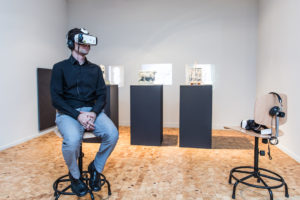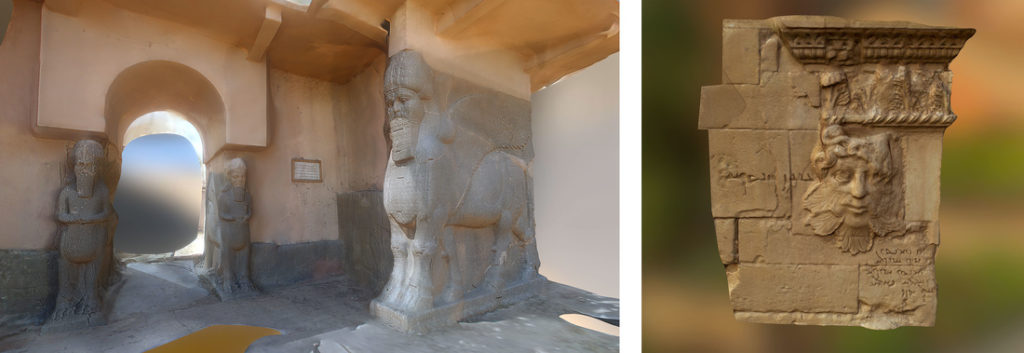There’s no better way to enrich ourselves with human history than by immersing ourselves in it, visiting the museums and historical sites across the world that tell the story of where we’ve all come from. Unfortunately, there exist heinous and diabolical groups out there who wish to construct their own version of history, and in doing so, have set out to destroy historical artifacts, regions, and lives. The most devastating of these destructive present-day groups is ISIS, who have spread destruction across the regions of Iraq and Syria and have conjured up fear and anger in the hearts of many.
In February of last year, the Islamic State militants ransacked the Mosul Museum in Iraq, macerating historically important artifacts and statues with drills and sledgehammers in hand. One of the destroyed pieces was a Assyrian lion statue, which was carved from limestone around 860 BC. Over one year later, thanks to the organization Rekrei, the destroyed collection of artifacts, including a 3D printed replica of the Assyrian limestone statue, was restored within the seventh-floor gallery of the Museum of Arts and Design in New York (MAD), approximately 5,800 miles away from the site previously destroyed by ISIS.
In addition, Rekrei also exhibited a first-century Nirgul tablet and a statue of a priest from the ancient Persian city of Hatra, both of which were also recreated with 3D printing technology. Rekrei, which was started by Germany-based Ph.D. student Chance Coughenour and Spain-based Ph.D. Student Matthew Vincent, utilizes a process called photogrammetry, using crowdsourced photographs to produce digital 3D models of cultural artifacts.
 Rekrei decided to crowdsource various photos of artifacts from those who had visited the Mosul Museum before it was destroyed. These photos were grouped together and used to resurrect the artifacts that have been demolished, which were eventually put on display in the NYC-based MAD exhibit. Founded in March 2015, it took the students just two weeks to get Rekrei up and running, and they believe that their organization is the first-ever photogrammetry initiative of this magnitude. The group has already acquired 5,000 images from the 40,000 unique visitors who have visited their website, which have been used to recreate more than 40 artifacts thus far.
Rekrei decided to crowdsource various photos of artifacts from those who had visited the Mosul Museum before it was destroyed. These photos were grouped together and used to resurrect the artifacts that have been demolished, which were eventually put on display in the NYC-based MAD exhibit. Founded in March 2015, it took the students just two weeks to get Rekrei up and running, and they believe that their organization is the first-ever photogrammetry initiative of this magnitude. The group has already acquired 5,000 images from the 40,000 unique visitors who have visited their website, which have been used to recreate more than 40 artifacts thus far.
“We quickly realized that the platform we were developing would work for the entire globe,” Vincent said. “At this point, the idea is that the global community prioritizes the sites or monuments or artifacts for reconstruction. The process is very organic, in the sense that not long after Palmyra was occupied by the Islamic State, all kinds of tourist photos were being uploaded to the site because so many people have been through the city.”
The completed 3D renderings can be viewed and rotated at any angle, and depending on the artifact, could consist of anywhere between 50 and 100 pictures. The technique of photogrammetry, also known by some as “computer vision,” is one that’s been used for over a century, but has just recently been enhanced by computer automation. Rekrei has also struck up a partnership with the Economist Media Lab, which is in the midst of finishing a VR version of the Mosul Museum via Google Cardboard.
 At the end of the day, both Vincent and Coughenour hope that those that have been displaced during this awful refugee crisis will take part in reconstructing their rich history, and plan to offer Rekrei users the necessary tools to curate their own collection of resurrected 3D models. Though it may be the most ambitious use of photogrammetry and 3D printing for recreating destroyed artifacts, it’s certainly not the first. Iranian media artist Morehshin Allahyari has also been working to conjure up 3D reconstructions of artifacts destroyed by ISIS in the Mosul Museum, while a group of archaeologists recreated a 3D model of the recently destroyed Temple of Bel in Palmyra.
At the end of the day, both Vincent and Coughenour hope that those that have been displaced during this awful refugee crisis will take part in reconstructing their rich history, and plan to offer Rekrei users the necessary tools to curate their own collection of resurrected 3D models. Though it may be the most ambitious use of photogrammetry and 3D printing for recreating destroyed artifacts, it’s certainly not the first. Iranian media artist Morehshin Allahyari has also been working to conjure up 3D reconstructions of artifacts destroyed by ISIS in the Mosul Museum, while a group of archaeologists recreated a 3D model of the recently destroyed Temple of Bel in Palmyra.
Though the villainous destruction dealt out by ISIS has certainly had a negative impact on the current state and history of Iraq and Syria, emerging technologies like 3D printing and photogrammetry are fighting to keep these rich cultures alive, fighting those who wish to eradicate the past in lieu of violence, unlawfulness, and fear. By uniting the entire world to keep these vital historical artifacts intact, Rekrei has become the hub for people to keep their culture and history alive, even against all odds. Discuss further over in the 3D Printing Used to Reconstruct Iraqi Museum forum at 3DPB.com.
[Source: Artsy]
Subscribe to Our Email Newsletter
Stay up-to-date on all the latest news from the 3D printing industry and receive information and offers from third party vendors.
You May Also Like
3D Printing Unpeeled: New Arkema Material for HP, Saddle and Macro MEMS
A new Arkema material for MJF is said to reduce costs per part by up to 25% and have an 85% reusability ratio. HP 3D HR PA 12 S has been...
3D Printing News Briefs, January 20, 2024: FDM, LPBF, Underwater 3D Printer, Racing, & More
We’re starting off with a process certification in today’s 3D Printing News Briefs, and then moving on to research about solute trapping, laser powder bed fusion, and then moving on...
3D Printing Webinar and Event Roundup: December 3, 2023
We’ve got plenty of events and webinars coming up for you this week! Quickparts is having a Manufacturing Roadshow, America Makes is holding a Member Town Hall, Stratafest makes two...
Formnext 2023 Day Three: Slam Dunk
I’m high—high on trade show. I’ve met numerous new faces and reconnected with old friends, creating an absolutely wonderful atmosphere. The excitement is palpable over several emerging developments. The high...
































